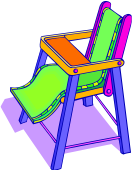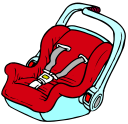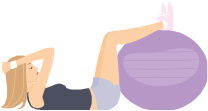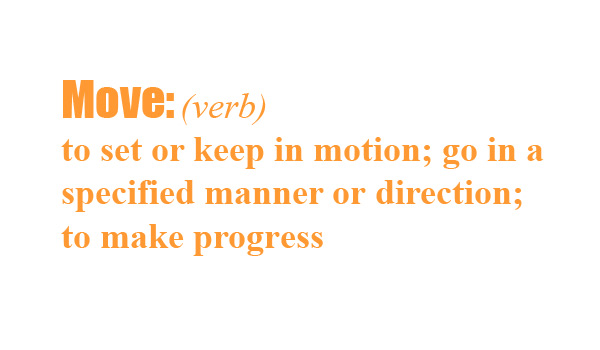Preventing Neck, Shoulder and Back Pain When Lifting a Child
Why is it common for parents to suffer from neck and lower back strain?
As a parent myself, I know how much lifting, bending and twisting is involved in caring for a baby or toddler. Whether it involves lifting from cots, strollers, high chairs, car-seats, changing tables or a bed, your body gets a work out!
It is common for parents to suffer from lower back and neck strain, pulled muscles or just achy muscles in the back, neck, shoulders and arms. It is easy to forget your child weighs several kilos and care needs to be given when lifting any such weight.
Using good technique and correct lifting posture can reduce the risk of injury.
Here are 10 tips to prevent neck, shoulder and back pain when lifting children.
As a parent myself, I know how much lifting, bending and twisting is involved in caring for a baby or toddler. Whether it involves lifting from cots, strollers, high chairs, car-seats, changing tables or a bed, your body gets a work out!
It is common for parents to suffer from lower back and neck strain, pulled muscles or just achy muscles in the back, neck, shoulders and arms. It is easy to forget your child weighs several kilos and care needs to be given when lifting any such weight.
Using good technique and correct lifting posture can reduce the risk of injury.
Here are 10 tips to prevent neck, shoulder and back pain when lifting children.
07/04/2013
Why is it common for parents to suffer from neck and lower back strain?
As a parent myself, I know how much lifting, bending and twisting is involved in caring for a baby or toddler. Whether it involves lifting from cots, strollers, high chairs, car-seats, changing tables or a bed, your body gets a work out!
It is common for parents to suffer from lower back and neck strain, pulled muscles or just achy muscles in the back, neck, shoulders and arms. It is easy to forget your child weighs several kilos and care needs to be given when lifting any such weight.
Using good technique and correct lifting posture can reduce the risk of injury.
Here are 10 tips to prevent neck, shoulder and back pain when lifting children.

1. From a Bed or Cot
Don’t lock your knees or hold baby away from you.
Don’t bend over and lean over the bed.
The Better Way: Lower the cot railing. Stand side on to the cot in a ‘stride stance’ with your outside leg in front of you and inside leg behind you. Slide baby close to you. Keeping your back straight, bend your knees then pick up baby.
2. From a Car Seat
Don’t twist and lean into the car seat with your arms fully extended.
The Better Way: For toddlers, if possible put one leg into the car and face the car seat. For babies, stand side on to the car and follow the instructions for picking up baby from a cot.
3. Off the Floor
Don’t bend over with straight legs to pick baby up.
The Better Way: Kneel down on one knee, bend over to pick up baby, supporting their head and neck, place baby close to your body and then stand up keeping your back straight.

4. Feeding in a High Chair
Don’t stand and bend over to feed baby.
The Better Way: Grab a chair and sit in front as close to baby before feeding.
5. Out of a Stroller
Don’t bend from the waist.
The Better Way: Stand in front of stroller. Remove obstacles ie barrier arms, Stand in a stride stance or kneel down. Pick baby up, bring baby close to you, and stand up keeping your back straight.
6. On to your Lap
Don’t remain seated & lean forward.
The Better Way: Get down on one knee, hold baby and move back to the seat. For toddlers have them climb into your lap.

7. Carrying an Infant Car Seat/Capsule
Don't lean to one side and carry it on your forearm like a handbag.
The Better Way: Bend your knees, keep your back straight, place both hands on the handle or underneath capsule, bend your elbows close to your body and carry it in front of you.
8.Carrying
Don’t carry your child placed on one hip walking long distances.
The Better Way: For babies, use a front pack. Better yet, try to use a stroller instead of carrying your child. If you must carry your child short distances, then place them in front of your stomach facing you with both hands cradling them. Try to minimise the overall time you are carrying them. Remember toddlers can weigh up to 15kg!
9. Feeding in your Lap
Don’t slouch and lean forward with your head down for long periods.
Don’t hold baby with all of their weight in your arm.
The Better Way: Lean back into your chair, place your arm around baby but rest baby on a pillow on your lap so baby is elevated and you are not carrying all their weight.
10. Get Stronger

Regularly do some simple exercises to strengthen:
• your abdominal,
• back,
• pelvic,
• hip
• and leg muscles
so as your child gets heavier your body is ready for the added weight.

